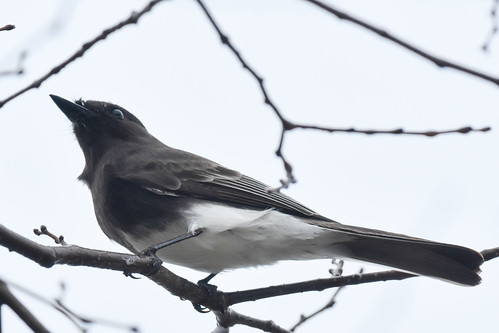The hydrolysis activity of rOs1BGlu4 was highest at pH 6 to seven (Determine 3A), dropped around 50% at pH 5.five and 7.five, and was negligible from pH 5. downward. This pH the best possible is higher than numerous other plant b-glucosidases  (Os3BGlu6, pH five. Os3BGlu8, pH 5. Os7BGlu26, pH four.five Os3BGlu7, pH five. rHvBII, pH four.) [four,six,24,twenty five], and probably reflects the in close proximity to neutral pH atmosphere of the cytoplasm, the place Os1BGlu4 is predicted to localize [26]. In distinction, the rice b-glucosidases shown earlier mentioned are expected to be in the apoplast or one more acidic compartment. The rOs1BGlu4 had relatively substantial exercise at pH 6., seven. and eight. after incubation with various pH buffers for up to 24 h (Determine 3B).
(Os3BGlu6, pH five. Os3BGlu8, pH 5. Os7BGlu26, pH four.five Os3BGlu7, pH five. rHvBII, pH four.) [four,six,24,twenty five], and probably reflects the in close proximity to neutral pH atmosphere of the cytoplasm, the place Os1BGlu4 is predicted to localize [26]. In distinction, the rice b-glucosidases shown earlier mentioned are expected to be in the apoplast or one more acidic compartment. The rOs1BGlu4 had relatively substantial exercise at pH 6., seven. and eight. after incubation with various pH buffers for up to 24 h (Determine 3B).
Analysis of laminaritriose hydrolysis. A. Slim layer chromatographic evaluation of merchandise of laminaritriose hydrolysis at various time factors. rOs1BGlu4 (.a hundred twenty five mg) was incubated with one mM laminaritriose in fifty mM sodium phosphate, pH six.five, at 30 uC from five to thirty min (five m30 m). Samples were incubated with (+) and without (-) enzyme, then evaluated by silica gel TLC with sulfuric acid staining. The positions of glucose (G) laminaribiose (L2) and laminaritriose (L3) are marked. B: Kinetic info for laminaritriose hydrolysis. The Michaelisenten curve and inset Lineweaver-Burk plot are revealed, alongside with the derived kinetic parameters and normal mistakes.
As the temperature improved from 5uC to 45uC, the exercise of rOs1BGlu4 increased correspondingly in a 10 min reaction. Nonetheless, as the temperature ongoing to boost from 45uC to 90uC, the activity of the rOs1BGlu4 lowered (Determine 4A). [3,27]. Nonetheless, some b-glucosidases have larger optimum temperatures, such as the Thai rosewood and Dalbergia nigrescens b-glucosidases, which22404218 have a temperature optima of 60 and 65uC, respectively [28,29]. Figure 4B shows that the rOs1BGlu4 was stable at twenty uC and thirty uC for up to one h incubation. The rOs1BGlu4 dropped about twenty% of its exercise when galactopyranoside with kcat/Km values that were 7.6%, 3.one%, and two.four% that of pNPGlc, respectively. These outcomes showed that rOs1BGlu4 is not stringent for glucose in the -1 subsite, exactly where the non-reducing glycosyl moiety is bound. This home is equivalent to a lot of GH1 and GH5 b-glucosidases, this kind of as the rice Os3BGlu7 [4], Os4BGlu12 [three], and GH5BG enzymes [30]. The rOs1BGlu4 b-glucosidase hydrolyzed b-(one,three)-linked oligosaccharides with DP of two-3 and b-one,4-connected oligosaccharides with DP values of 2-6 at different prices, but not the b-(1,six)-linked disaccharide gentiobiose (Tables one and two). Laminaribiose was most proficiently hydrolyzed (kcat/Km of twelve.5 mM21s21), whilst laminaritriose (Determine six) was comparatively poorly hydrolyzed (kcat/Km of 5.sixty three mM21s21) and for a longer time b-(1,three)-joined oligosaccharides ended up not hydrolyzed. In distinction, amongst b-one,four-connected oligosaccharides, cellobiose was the most inadequately hydrolyzed and cellotetraose most IQ 1 distributor efficiently hydrolyzed, with a catalytic efficiency (kcat/Km) of 8.seven mM21s21, followed by cellotriose, cellopentaose, cellohexaose and cellobiose. In comparison, pNP-b-cellobioside was the most efficiently hydrolyzed substrate examined, with a kcat/Km worth of 24.four mM21s21.